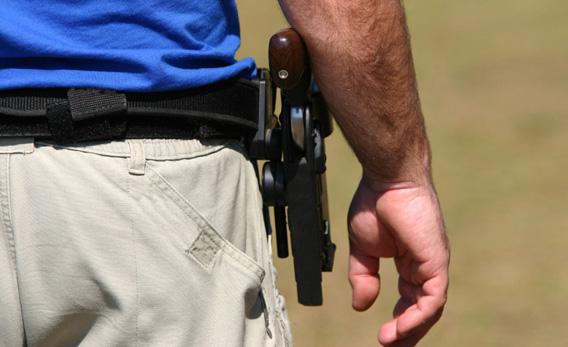Read more on Slate about gun control.
A Republican congressman responded to the Newtown shootings by calling for more citizens to be armed. “I wish to God she had had an M-4 in her office,” Rep. Louie Gohmert of Texas said on Fox News on Sunday, referring to the Sandy Hook principal who was killed while lunging at shooter Adam Lanza. Have armed citizens ever successfully intervened to bring down a potential mass shooter?
Yes, but it’s rare. Often it’s not clear whether brave actions on the part of armed civilians prevented further death. In 1997, assistant principal Joel Myrick used a handgun to stop fleeing school shooter Luke Woodham.* Woodham, who had killed his mother that morning, murdered two students and wounded several others before Myrick, an Army reservist, rammed his car into Woodham’s and then forced him to the ground. At a 1998 shooting at a middle-school dance in a Pennsylvania restaurant, which left one teacher dead and three other people wounded, restaurant owner James Strand took out a shotgun and chased down the teen shooter before persuading him to give up his weapon. After 51-year-old teacher Carl Brown opened fire on a Miami welding shop in 1982, killing eight, a man nearby grabbed his gun, jumped in his car, and chased Brown as he fled on his bicycle. The pursuer fired what he said was a warning shot, striking Brown in the back, and then ran Brown into a light pole. (Dade County State’s Attorney Janet Reno concluded that the pursuer had used “justifiable force.”) Not all interventions are successful: Other armed civilians who have attempted to stop shootings have been left severely injured or have been killed.
Armed interventions by retired and off-duty police officers, who have been trained to react, are more common. When a shooter entered an AT&T store in 2010 in a small New York town with a list of six employees he planned to kill and shot one of them, a shopper who was an off-duty officer drew his .40 caliber handgun and killed the man. A 2007 rampage in Trolley Square, Utah, was put to an end after an officer, who was on a date with his wife, engaged the man in a shootout. The off-duty officer kept the 18-year-old shooter pinned down until more police arrived and killed the shooter. In a 2006 school shooting, London Ivey, a school resource officer; and Russ LeBlanc, a former state trooper and driver’s ed teacher, confronted a Columbine-obsessed attacker in North Carolina who was firing at cars outside the school and had killed his father that day. Armed with his pistol, Ivey ordered the student to drop his weapons, and LeBlanc (who was unarmed) put him in handcuffs. In another oft-cited example, a student who opened fire at the Appalachian School of Law in 2002 was brought down by a group of law students who were trained as police officers. Two of the students had armed themselves during the shooting and were involved in subduing the gunman, though there are differing accounts of exactly what role the arms played in the confrontation.
The subject of whether more guns and concealed-carry permits could help fight mass shootings is highly controversial. An investigation by Mother Jones concluded that no more than 1.6 percent of mass shootings were ended by armed civilians. On the other hand, gun advocates argue that it’s hard to know how many more shootings would have become mass murders had civilians not been on the scene to end them early. (Following the FBI’s definition of a mass murder, Mother Jones accounted only for murders of four or more.) Furthermore, gun advocates argue that many mass murderers target “gun-free” zones, like schools, where the victims are defenseless against shooters.
Academic studies on the issue have not reached consensus. A 1999 study by John Lott of the University of Maryland and William M. Landes of the University of Chicago, often cited by conservatives, found that “shall issue” laws allowing concealed handguns “reduce both the number of [multiple victim] shootings as well as their severity.” However, a review of studies on the topic found the evidence to be inconsistent and inconclusive. A recent Washington Post fact-check similarly found the current evidence to be too murky for representatives like Gohmert to cite as fact.
Got a question about today’s news? Ask the Explainer.
Correction, Dec. 19, 2012: This article originally misstated the year of the Luke Woodham school shooting as 2006. (Return to the corrected sentence.)
